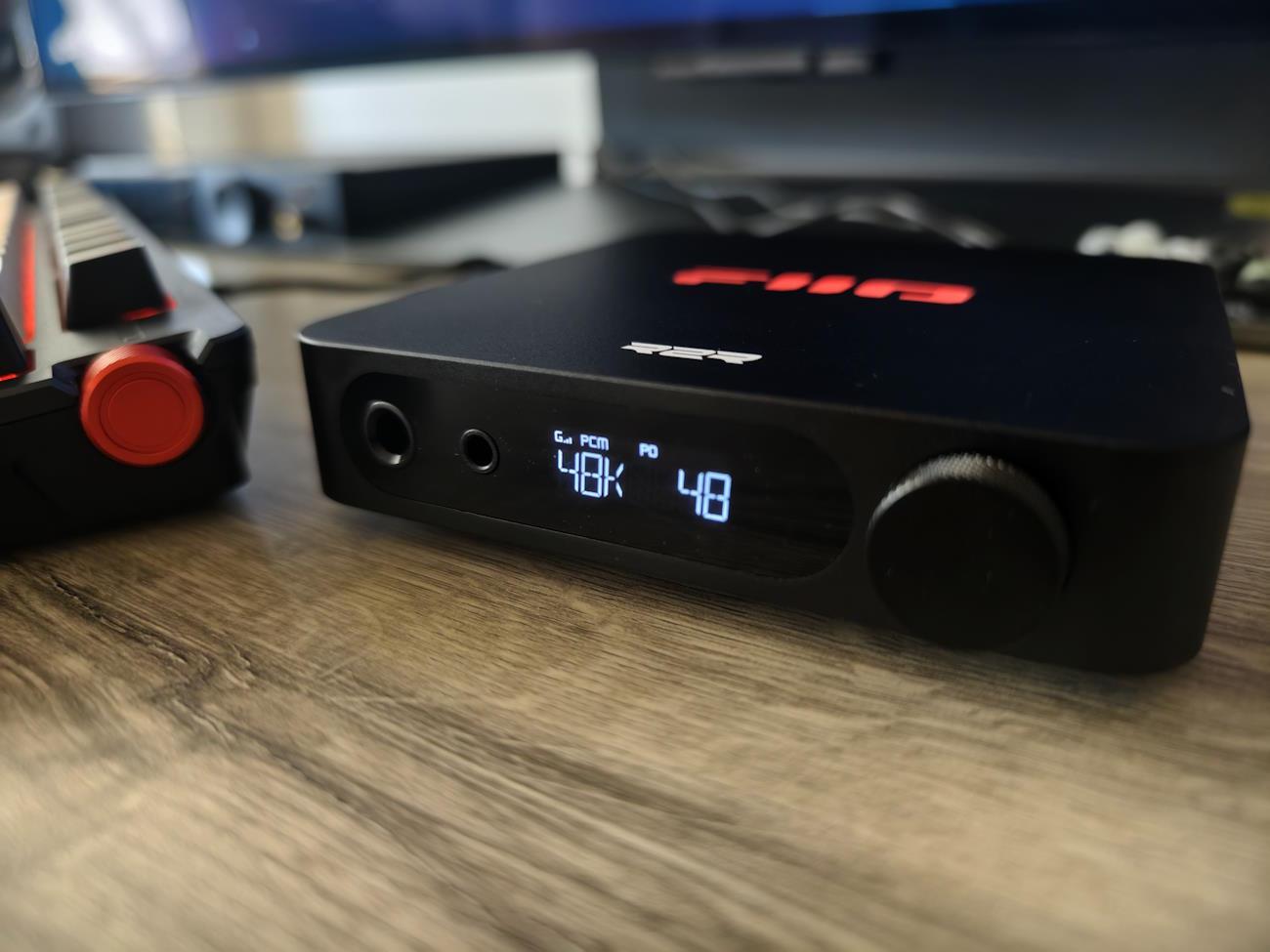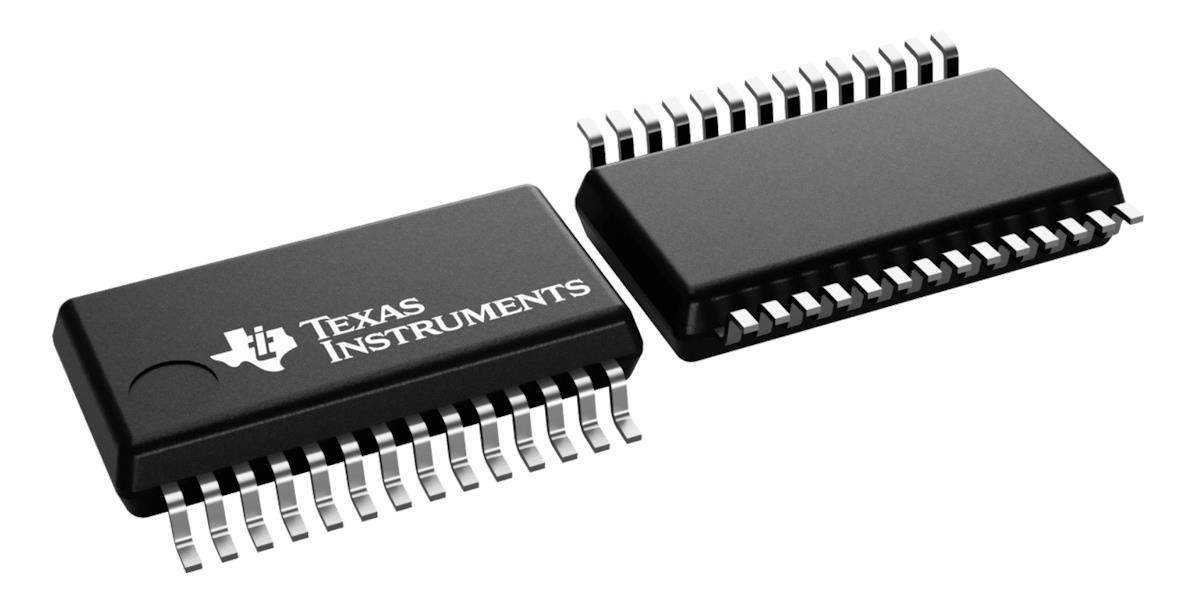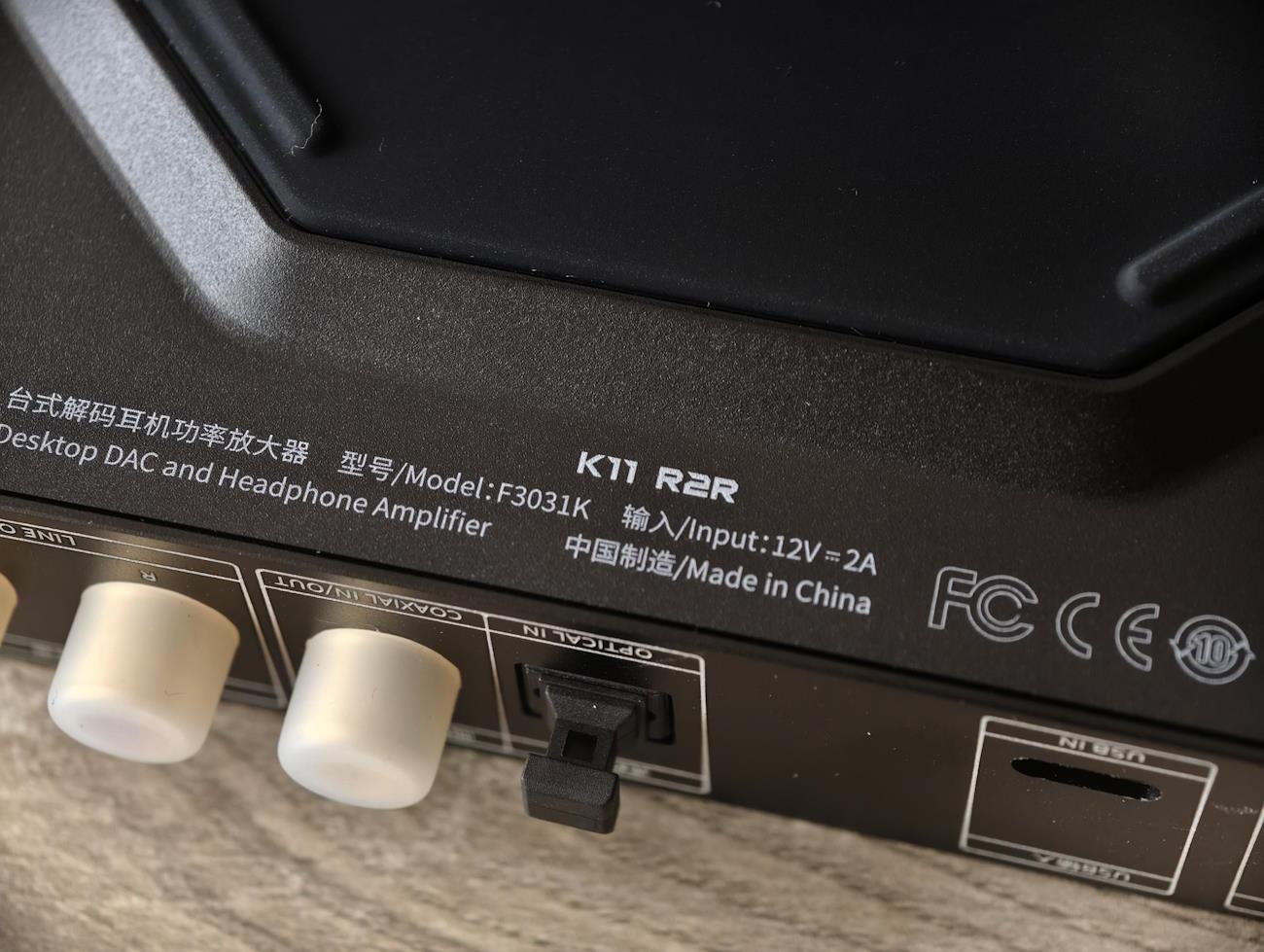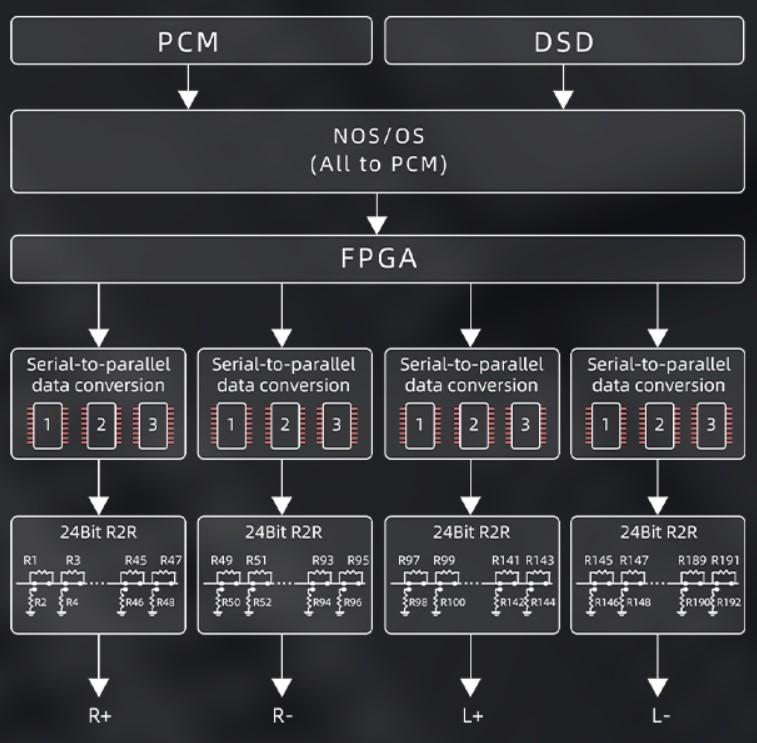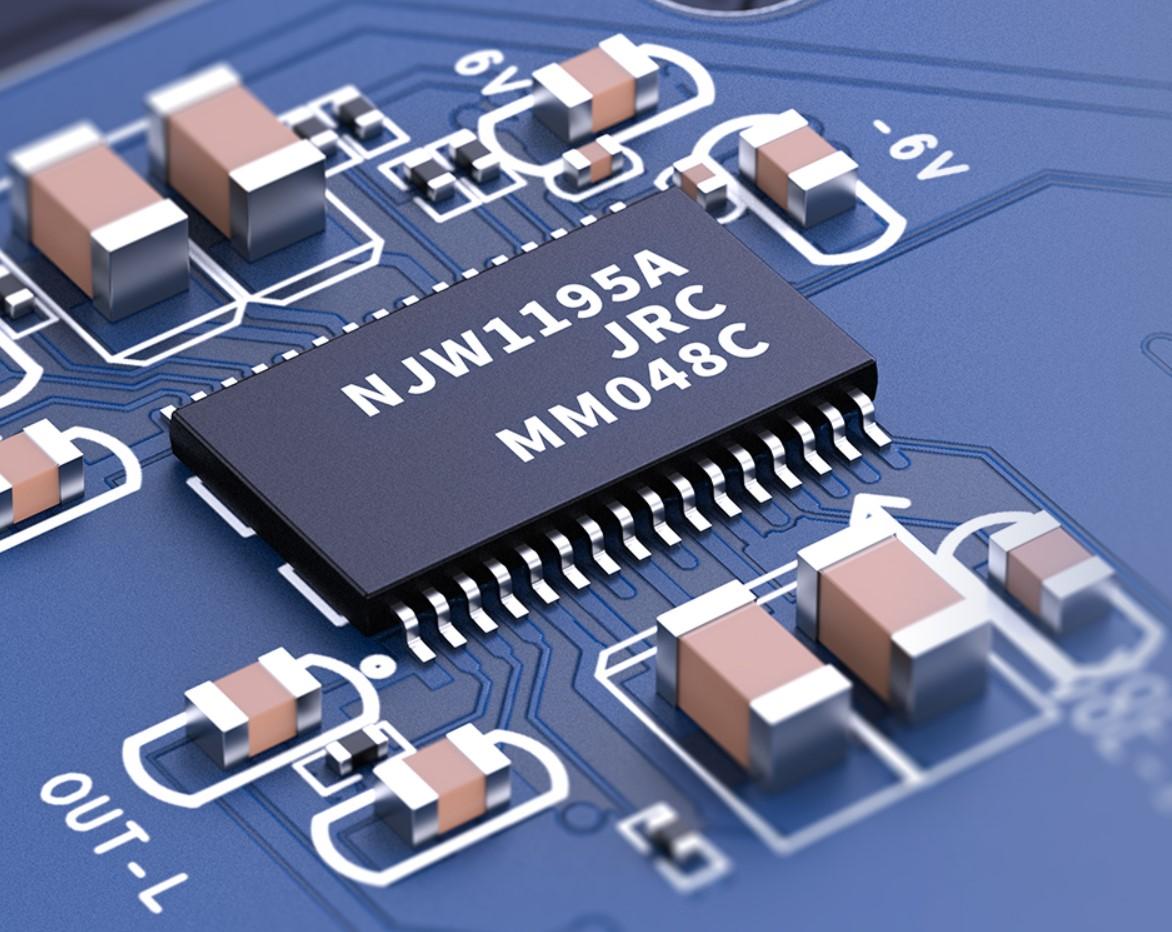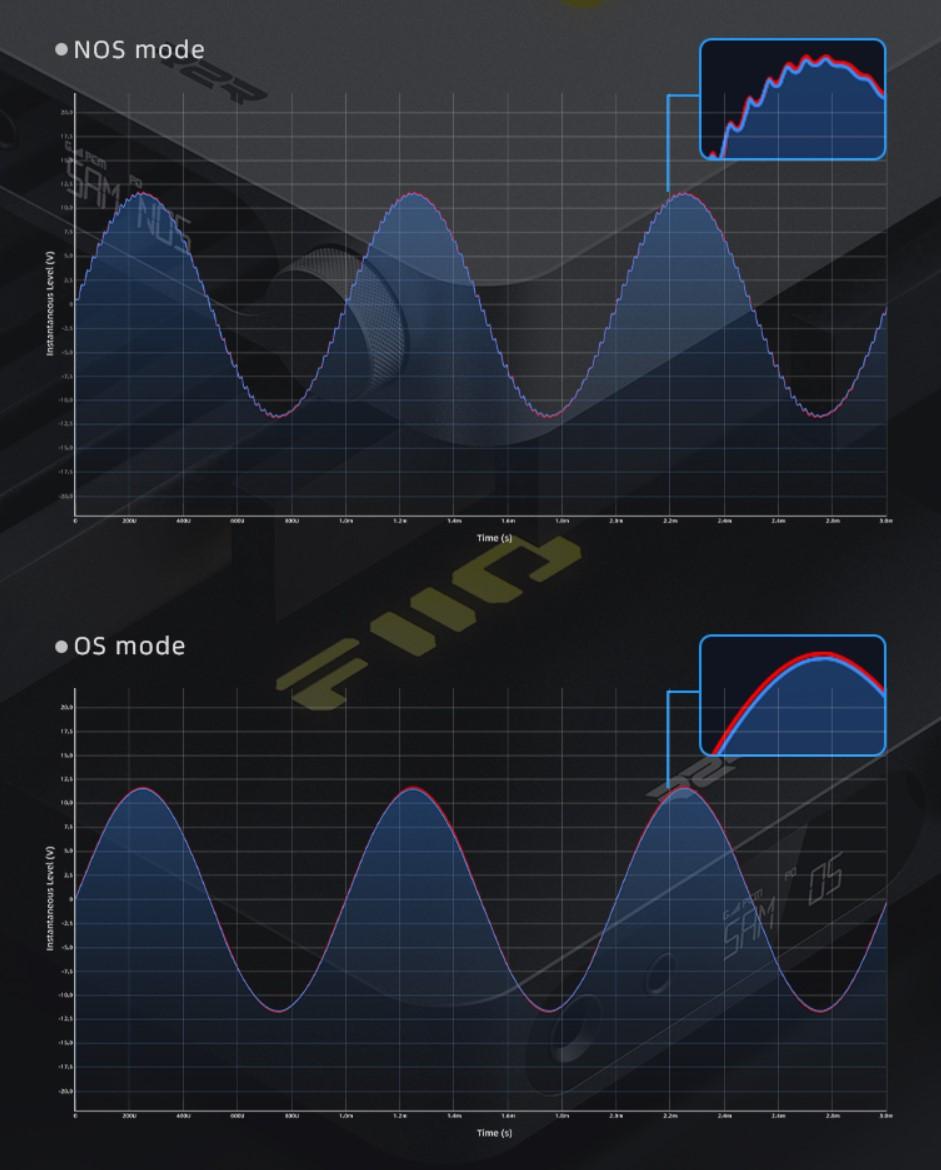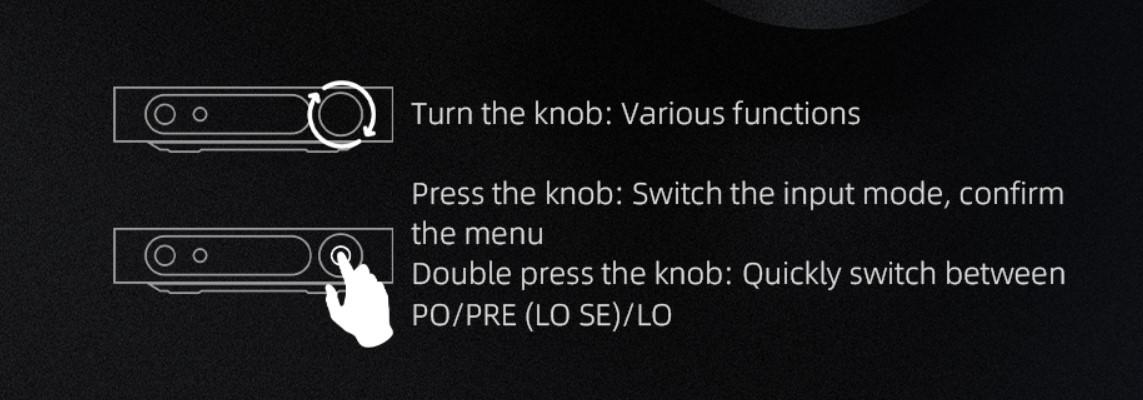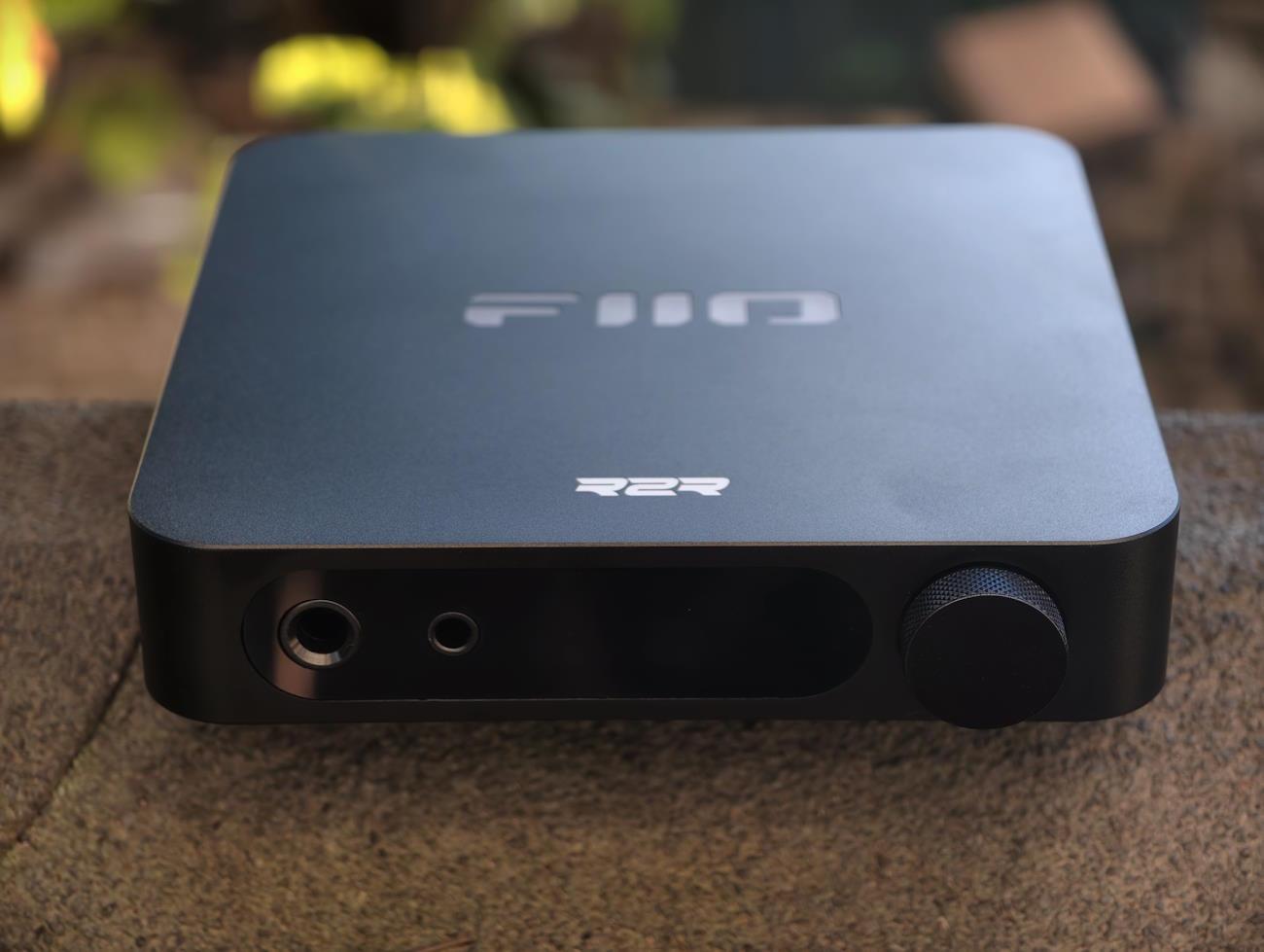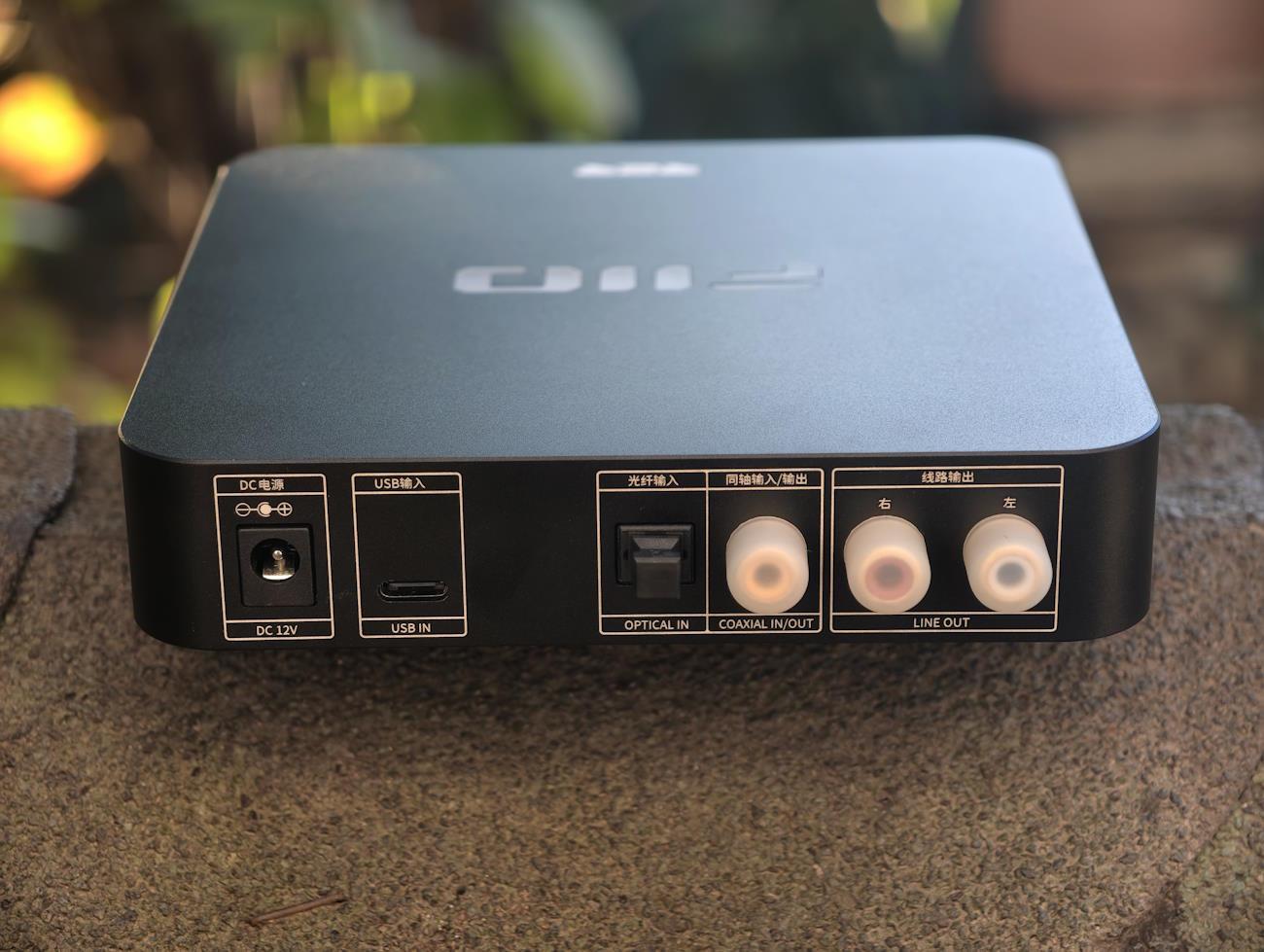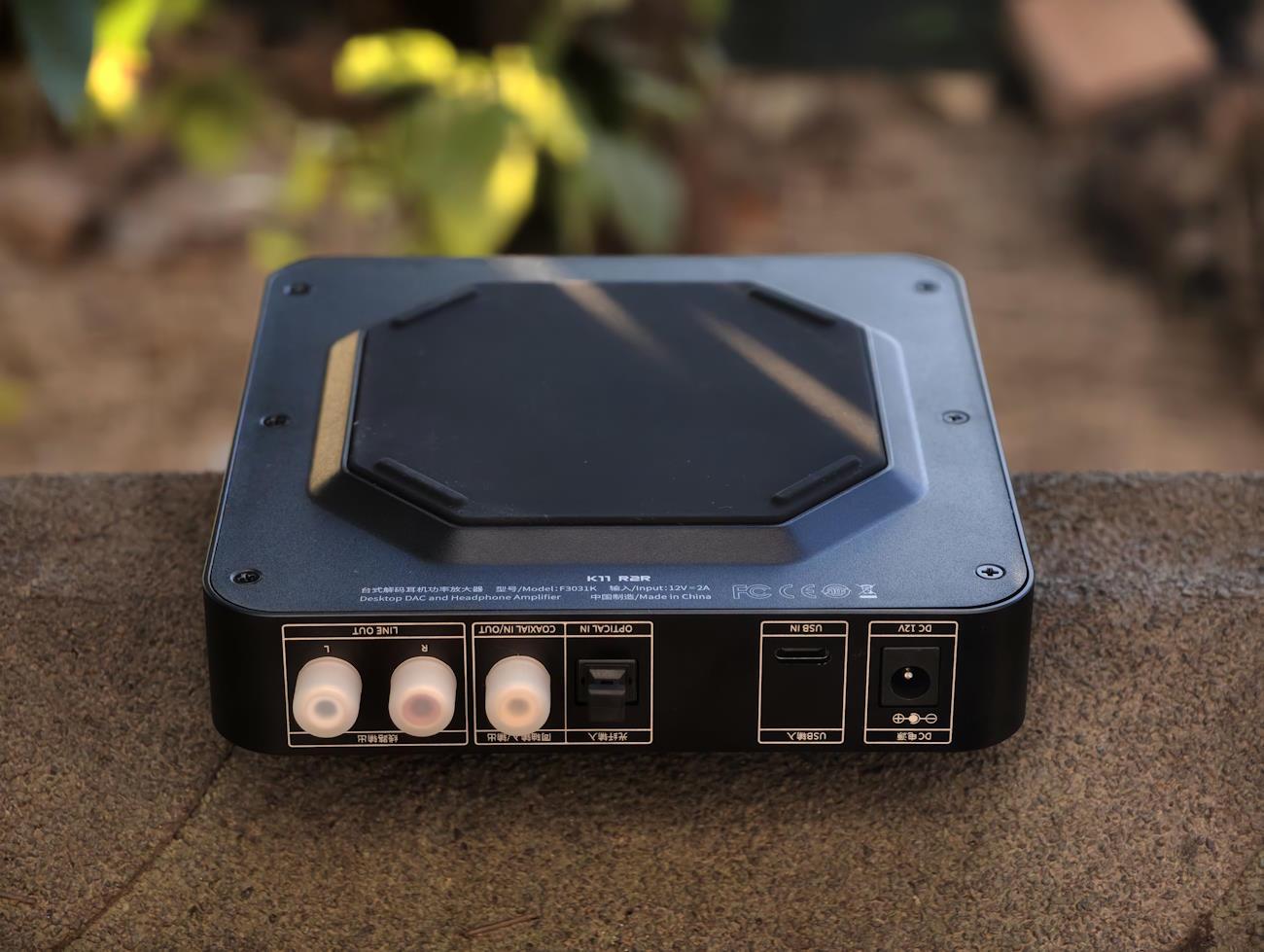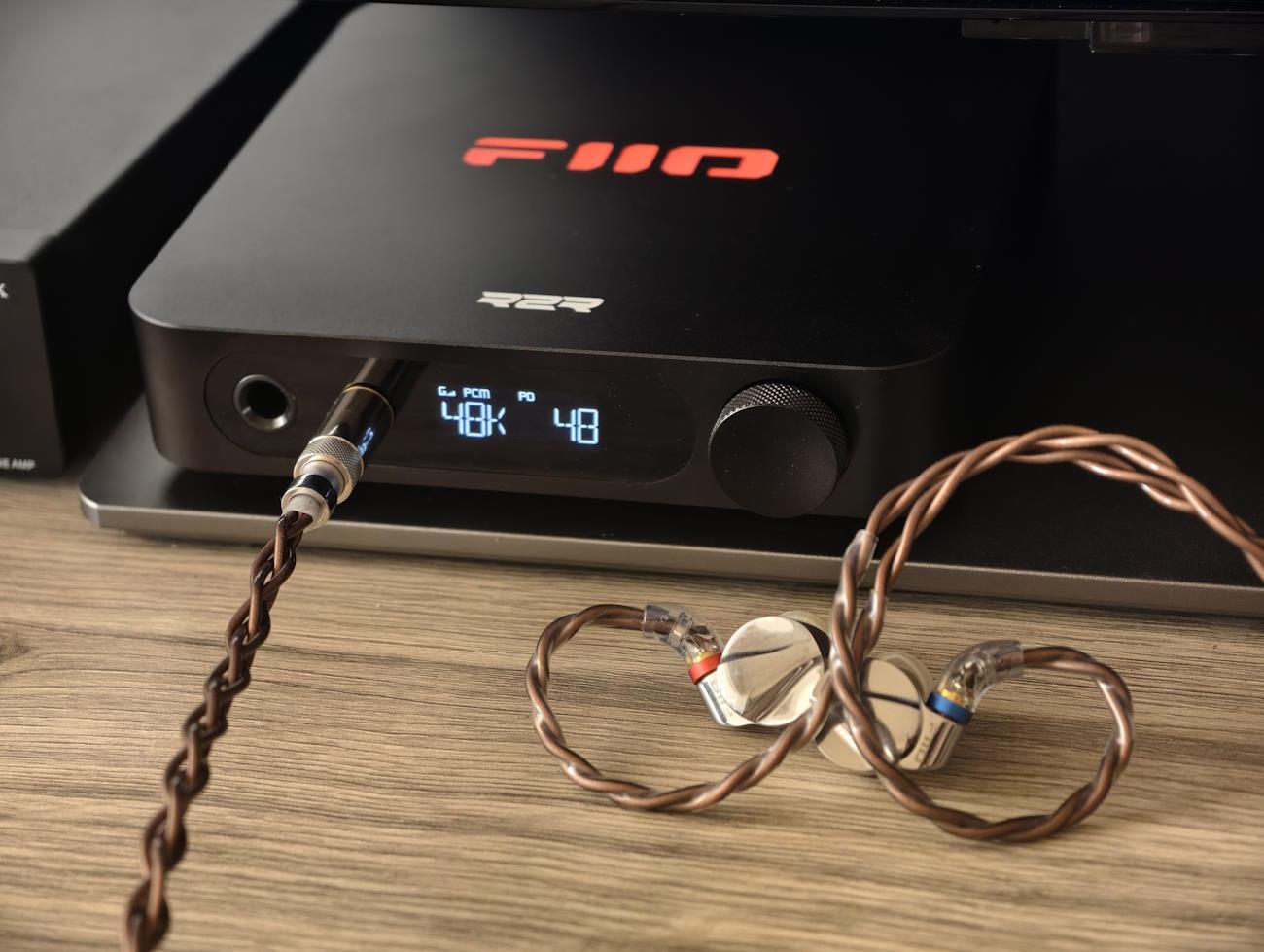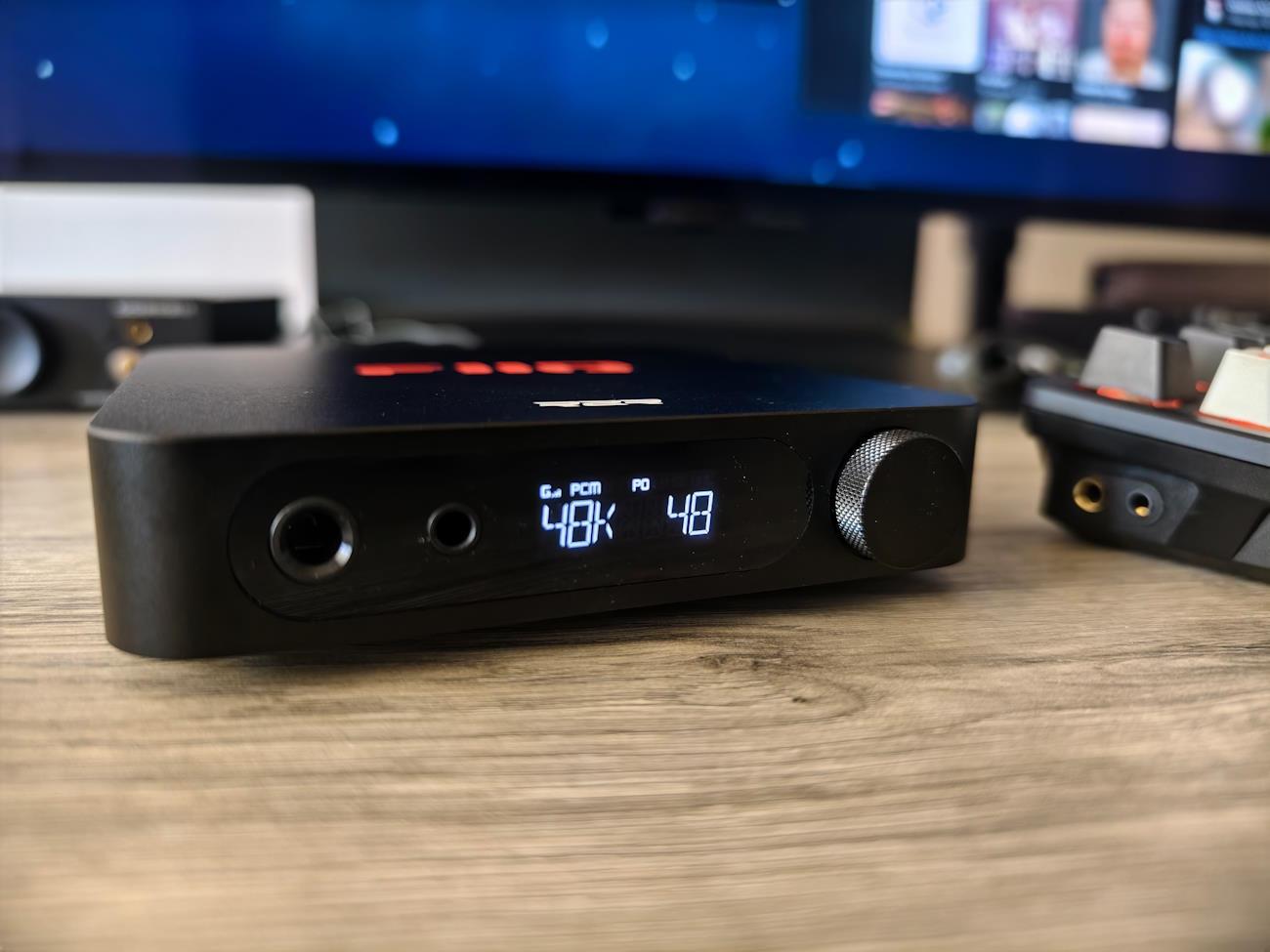FiiO K11 R2R Review – Desktop DAC & Headphone Amplifier for $159
The new FiiO K11 R2R comes equipped with many input-output options including USB, Coaxial, and Optical inputs as well as 4.4mm, 6.35mm, and RCA output options. It’s a small form factor desktop DAC-AMP that can be used worry-free with a variety of devices including PCs, Laptops, smartphones, and even gaming consoles including PS5 and Nintendo Switch.
Let’s talk about digital audio converters first, to better understand what the new K11 R2R offers as compared to the first model the K11 which launched in September 2023.
It’s been 4 decades since the world’s first modern-day DAC chip was designed and manufactured by Burr-Brown Research Corporation in 1982 (acquired by Texas Instruments in 2000).
Most music distributed today is recorded and encoded using a pulse-code modulation (PCM) method. This approximates and records a measurement of audio that represents sound as samples of the original signal amplitude. Multibit DACs decode PCM signals with a true 16 or more, a bit-to-bit process that preserves the original PCM samples.
Due to the increasing costs for the production of R2R DACs, there has been a surge in the popularity of a cheaper alternative that does not require the same high-precision manufacturing process, these are known as Delta Sigma chips.
Delta Sigma DACs (K11)
Delta Sigma chips use a delta-sigma modulation method to convert high-bit-count, low-frequency digital signals into lower-bit-count, higher-frequency digital signals. As mentioned earlier this DAC architecture is a lot more cost-efficient and has a reduced circuit complexity, resulting in it being increasingly used in modern electronics.
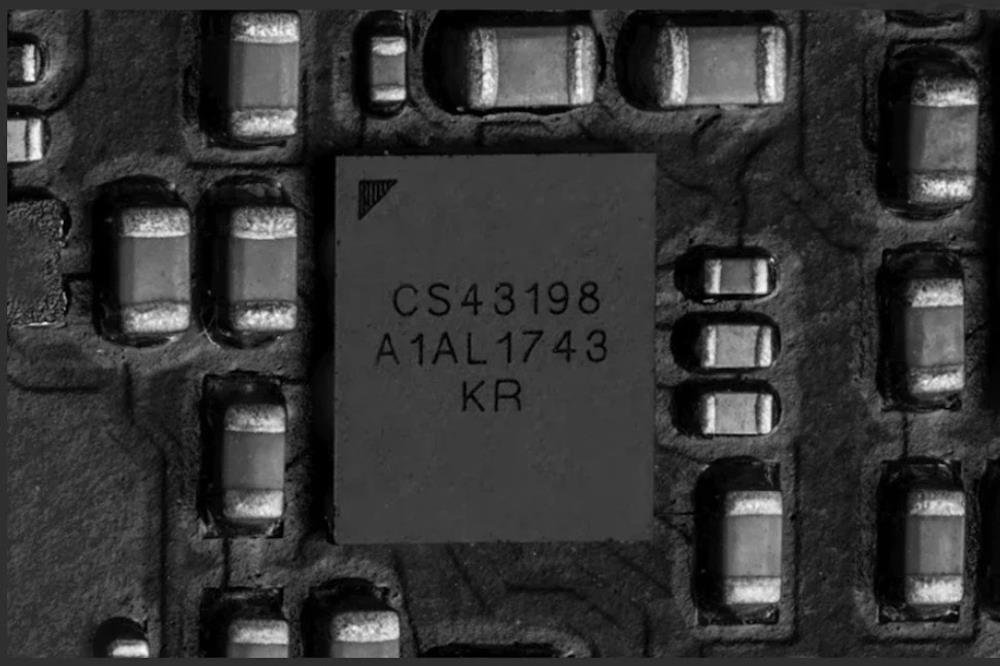
To achieve the resolution required for music reproduction, oversampling is used. One of the drawbacks to this method, some might say, is that a very high level of noise is generated. To make the chip usable, sound engineers have developed many methods of sound shaping, demodulation, and low pass filters that redirect this noise to frequencies above the audible range.
R2R (Resistor to Resistor) DACs (K11 R2R)
This conversion of the binary signal (1’s and 0’s) which represents a number that determines the value of the output voltage, is done by an array of resistors, R and 2R, in a ladder formation.
As its name implies, the “ladder” description comes from the ladder-like configuration of the resistors used within the Resistive Ladder network. An R2R resistive ladder network provides a simple means of converting digital voltage signals into an equivalent analog output. The output signal as a result of all these input voltage points is taken from the end of the ladder which is used to drive the inverting input of an operational amplifier.

Then the R2R resistive ladder network is nothing more than long strings of parallel and series-connected resistors acting as interconnected voltage dividers along its length, and whose output voltage depends solely on the interaction of the input voltages with each other.
Using an R2R resistive ladder network and adding it to an inverting operational amplifier circuit, we can create a simple R2R digital-to-analog converter, DAC.
Each set of resistors acts as current dividers organized in ascending order. An instantaneous conversion occurs when bits are translated simultaneously and does not require oversampling. This is why true R2R DACs are known as Non-Oversampling (NOS) DACs.
It is a popular method used in high precision equipment but producing such converters at high levels of accuracy can get very expensive and is mainly used in premium flagship audio DACs, lately also in some premium flagship digital audio players, DAPs. The extremely precise resistor arrays have to be laser-trimmed in production, meaning production times can be lengthy.
Fully differential true 24-bit R2R resistor array DAC
I tried to explain what the R-2R term on the K11 R2R means as simply as I could. FiiO’s newly self-developed four-channel fully differential 24bit R2R DAC consists of 2x 48 precision thin-film resistor arrays per channel, totaling 192 resistors with 0.1% tolerance and low-temperature drift (30ppm).
In terms of the circuit architecture, the K11 and K11 R2R can be considered siblings. They use essentially the same control unit, headphone amplifier circuit, and USB decoding scheme. The primary differences are that the integrated CS43198 DAC is replaced with FIIO’s 24-bit R2R resistor array DAC, and the power supply around the R2R DAC has been optimized. These changes may seem simple, but they are quite intricate.
The DAC of the K11 is a single chip. In contrast, the R2R architecture is a complex circuit system with an oversampling chip, FPGA chip, serial-to-parallel conversion chip, R-2R resistor network, and impedance transformation circuit. Within the same structural design and limited circuit space, engineers have stacked an independent R2R module internally, solving space issues and preventing the R-2R resistor network from being affected by electromagnetic interference. Therefore, the K11 R2R evolving from the K11, involved significant research and development efforts.
K11 R2R’s DAC module is designed with independent PCB with phosphor copper processed. The phosphor copper shielding cover undergoes a passivation process, providing corrosion resistance and anti-oxidation capabilities.
This configuration delivers a unique and charming sound. In addition, the K11 R2R employs a fully differential architecture, resulting in lower noise, with fewer FFT harmonics and a darker music background compared to typical ones.
Support for PCM 384kHz/24bit and DSD256 decoding (DSD256 requires setting the DSD output mode to Native on the source device, internally converting to PCM before being decoded by the R2R resistor arrays), means the K11 R2R can easily handle high-precision audio signals and fully exhibit the details within, providing you with an excellent audio experience.
Specially designed audio circuit and power supply
In the K11 R2R, the audio signal is transmitted via a USB interface processor to a digital audio bridge. After being processed by an FPGA, it is sent to the R2R DAC for 4-channel output after decoding. Then, it passes through two Ti OPA1642 op-amps for low-pass filtering and single-ended analog signal converting and transmits to the NJW1195A electronic volume control chip for precise volume adjustment.
The output stage uses two SGM8262 op-amps for 4-way phase inversion and amplification, resulting in outputs of singed-ended and balanced analog signals. The audio circuit features gain controls. It is complemented by a specially-designed headphone protection circuit and a pop noise elimination system, ensuring the audio circuit is both high quality in the sound produced and reliable.
The K11 R2R uses up to 17 low-noise LDO precision regulator IC and 2 DC-DC converters, providing multi-channel specialized power supply of -9V, 8V, ±7.5V, ±6V, 5.4V, 3.3V, 1.8V, and 1.2V. These are combined with an external custom 12V switching power supply to ensure the purity of the power supplied and provide a solid foundation for stronger power output.
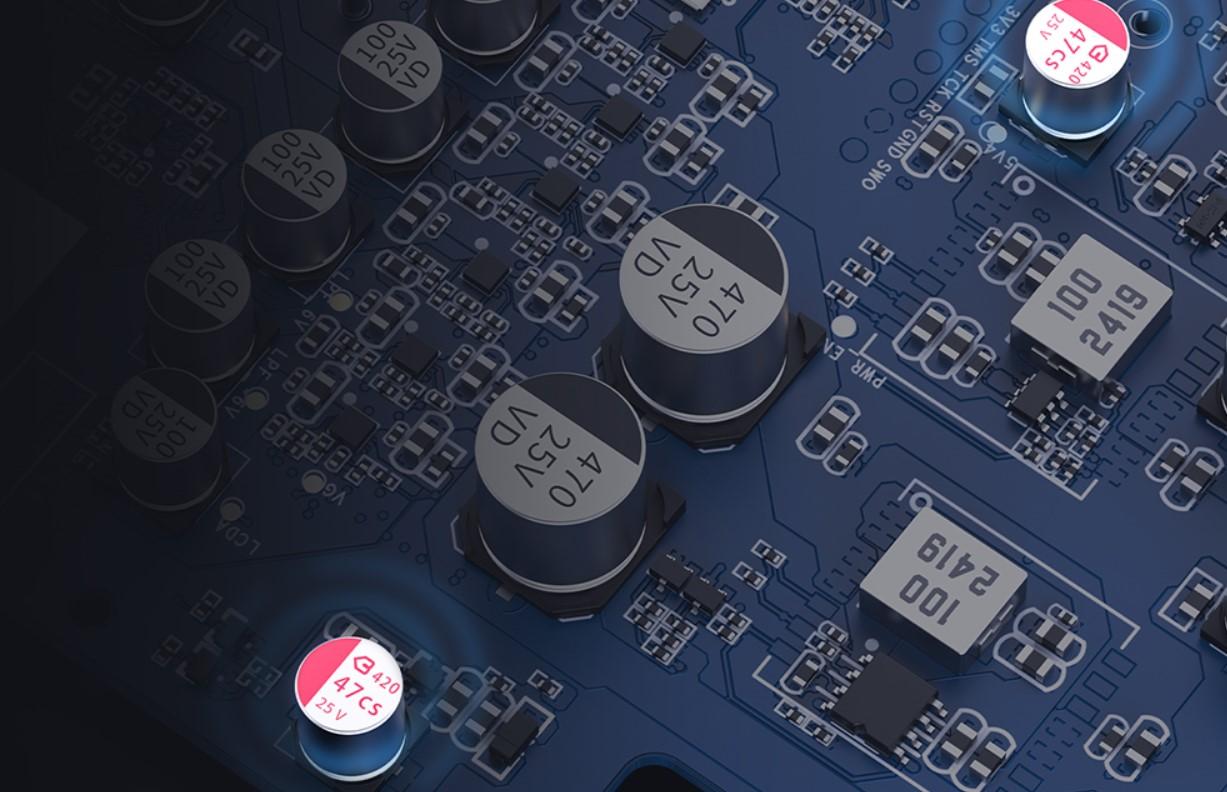
The newly added Beryl solid capacitors feature lower ESR, significantly enhancing the efficiency of the power filter, and resulting in a purer power supply.
High-quality electronic volume control NJW1195A
In the analog circuit is added an independent volume control IC, NJW1195A, which is a 4-channel electronic volume controller. This resistor ladder electronic potentiometer has low distortion and low noise, allowing precise volume adjustment.
Dual NOS/OS modes
The K11 R2R comes with dual modes of NOS and OS. NOS mode means Non-Oversampling, which maintains the original sampling rate for decoding, preserving authentic sound, and allowing you to enjoy an organic and captivating musical experience.
While OS mode means Oversampling, which upsamples globally to a high sampling rate of 384kHz, for superior audio performance and even more refined, clear sound.
3 gain levels, 3 independent volume curves
The K11 R2R keeps 3 gain levels, each designed with an independent volume curve, providing a better listening experience with various types of headphones, whether you are using sensitive earphones or harder-to-drive over-ear headphones.
The K11 R2R takes the same balanced amp circuit as the K11 with an output power of up to 1300mW+1300mW.
Adjustable RGB Logo Lightning
The FiiO logo is illuminated with RGB lighting, giving you a quick way to identify the sampling rate of the current audio being played back. Six LED strips work in conjunction with carefully placed reflective film and parts of the body designed to reflect light to make the light show uniform and elegant. Brightness, color, and light patterns are all adjustable using the knob.
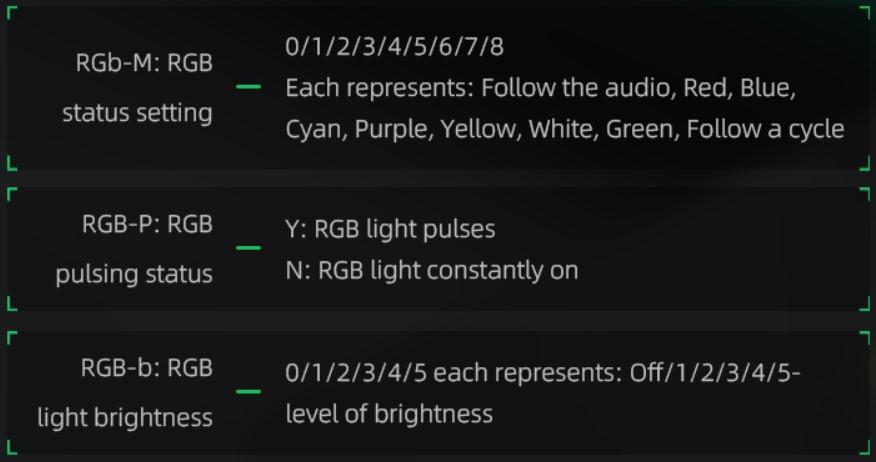
Multi-function Volume Knob
The K11 R2R’s multi-function volume knob is used to power the device on and off, for menu operation, for volume adjustment, and for other functions. The knob is designed so that you can quickly execute various complex actions by simply pressing and turning the knob.
You can also quickly switch between PO/PRE (LO SE)/LO modes by double-pressing the knob, making it easier for you to appropriately connect to different audio setups. PO/PRE/LO modes remember the last volume set in each mode independently, no need to readjust the volume when switching between modes
Unboxing
Specs
- Colors: Black, Silver, Red (planned for later production)
- Main control chip (single-chip microcomputer): GD32F303RET6
- DAC: Fully differential true 24bit R2R resistor arrays
Volume control chip: NJW1195A - USB input decoding: 384kHz/32bit, DSD256
- Coaxial input decoding: 192kHz/24bit
- Optical input decoding: 96kHz/24bit
- USB connector: Type-C
- Display: Custom LCD screen
- Dimensions: 147x133x32.3mm (including feet)
- Weight: About 420g
- Power supply: DC12V 2A external adapter
- SE power output 1: L+R≥460mW +460mW (32Ω, THD+N<1%) (32Ω/single-ended/high gain)
SE power output 2: L+R≥50mW+50mW (300Ω, THD+N<1%) (300Ω/Single-ended/High gain)
BAL power output 1: L+R≥1300mW+1300mW (32Ω, THD+N<1%) (32Ω/Balanced/High gain)
BAL power output 2: L+R≥220mW+220mW (300Ω, THD+N<1%) (300Ω/Balanced/High gain) - Frequency response: 20Hz~50kHz: attenuation<1.3dB
- SNR: ≥115dB (A-weighted)
- Noise floor: PO<7.2uV (A-weighted); BAL<14.1uV (A-weighted)
- Output impedance: PO<1Ω (32Ω load); BAL<1.5Ω (32Ω load)
- THD+N: LO<0.02% (1kHz/10kΩ)
Price: $159.99
I would like to thank FiiO for providing me with the review sample of the K11 R2R.
Sound
The K11 R2R offers a distinct sound signature compared to the typical Delta-Sigma DACs such as ESS, AKM, and CIRRUS LOGIC. If you are accustomed to the latter, switching to an R2R DAC will provide you with a unique and different audio experience. The overall tone of the K11 R2R reflects the characteristic ‘R2R’ sound.
To me, that is a very natural quality to its instrumental and vocal timbre and a highly engaging level of detail within its texture and dynamics. Significantly, the K11 R2R showcases a distinct absence of ‘delta-sigma shine’ in its ability to articulate each note played and highlight every intricate detail. This does not imply brightness, but rather a unique depth to the notes, evolving from the initial attack, through the sustain, and culminating in the resolution of the decay.
With delta-sigma DACs such as the K11, the digital interpretation you receive is typically exceptional in articulation and rich in complexity. However, at the same time, you often get a feeling that the ‘moment’ passes you by so quickly and you are onto the next note, and the next note, and so forth. With the K11 R2R, each note sounds like an ‘event’, hitting with some awesome solidity and dynamic presence.
There is less of an emphasis on the surrounding wall of spatial cues dancing around you and more of a determined focus on how each note unfolds and what it offers. You could argue that there is an almost analogue-type quality to performances except the K11 R2R resolves so much better than something from a bygone era. Perhaps that is what makes the K11 R2R so unique.
After 100 hours of burn-in
After plenty of hours of keeping it warm, the K11 R2R offers a full-bodied but also very balanced tonal performance. I suspect there is a very slight fade into the treble which is a little more pronounced in NOS mode. That delicate treble fade plays a major role in pulling your listening focus just ever so slightly into a vivid-sounding lower treble and upper mids presence.
And yet, the percussion timbre is not splashy whatsoever. I hear every cymbal crash and bell clatter coming across clear as day with tons of textural detail but with the perfect attack and decay balance. Life-like but life-like in a slightly pleasing manner. Giving most instruments some heft and warmth for a very listenable quality.
The vocals are almost perfect for my taste, sounding slightly forward with some gorgeous body and confident handling of any naturally occurring sibilance. That applies to both male and female vocals by the way.
The K11 R2R soundstage is excellent with plenty of air and separation but more to the natural side in terms of treble forwardness. What K11 R2R has is stellar control and placement from top to bottom to create a very strong sense of open space, especially in terms of width.
Sum-Up
An R2R desktop DAC & Headphone Amplifier from FiiO for $159, do I need to say more? The K11 R2R is the cheapest DAC with a 24-bit R2R resistor array in the market. I think you know what to do if you call yourself an audiophile. For those who are new to this hobby, trust me, the K11 R2R will be the best buy if you have this budget for a new desktop DAC & headphone AMP. You will be addicted to its sound.

